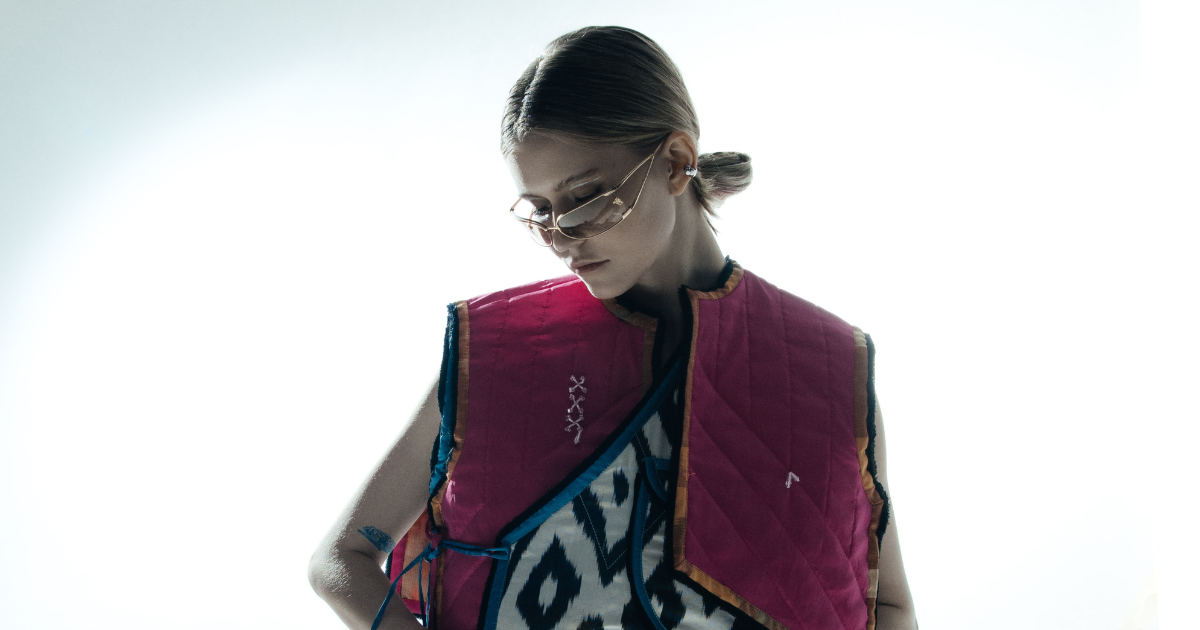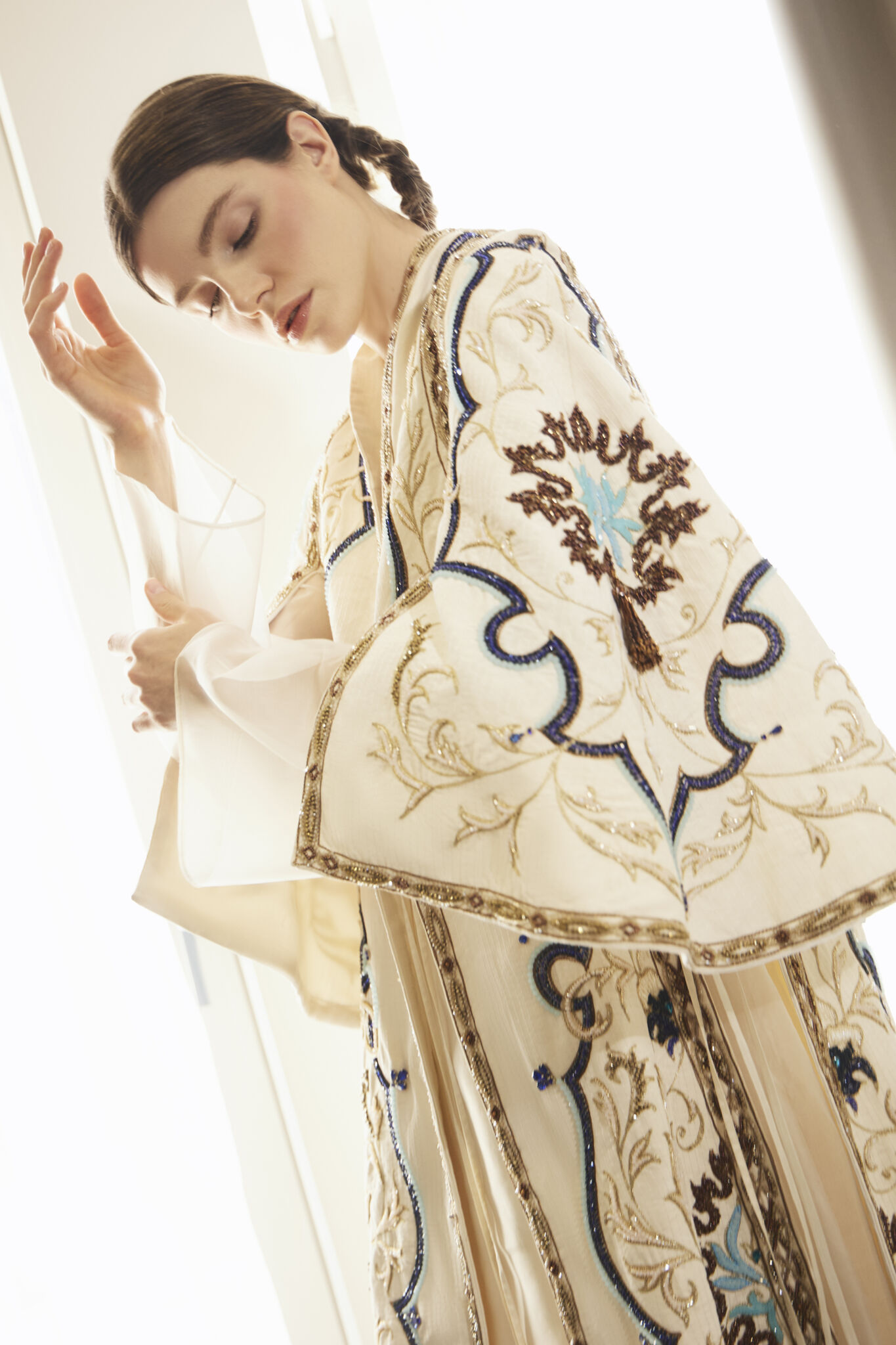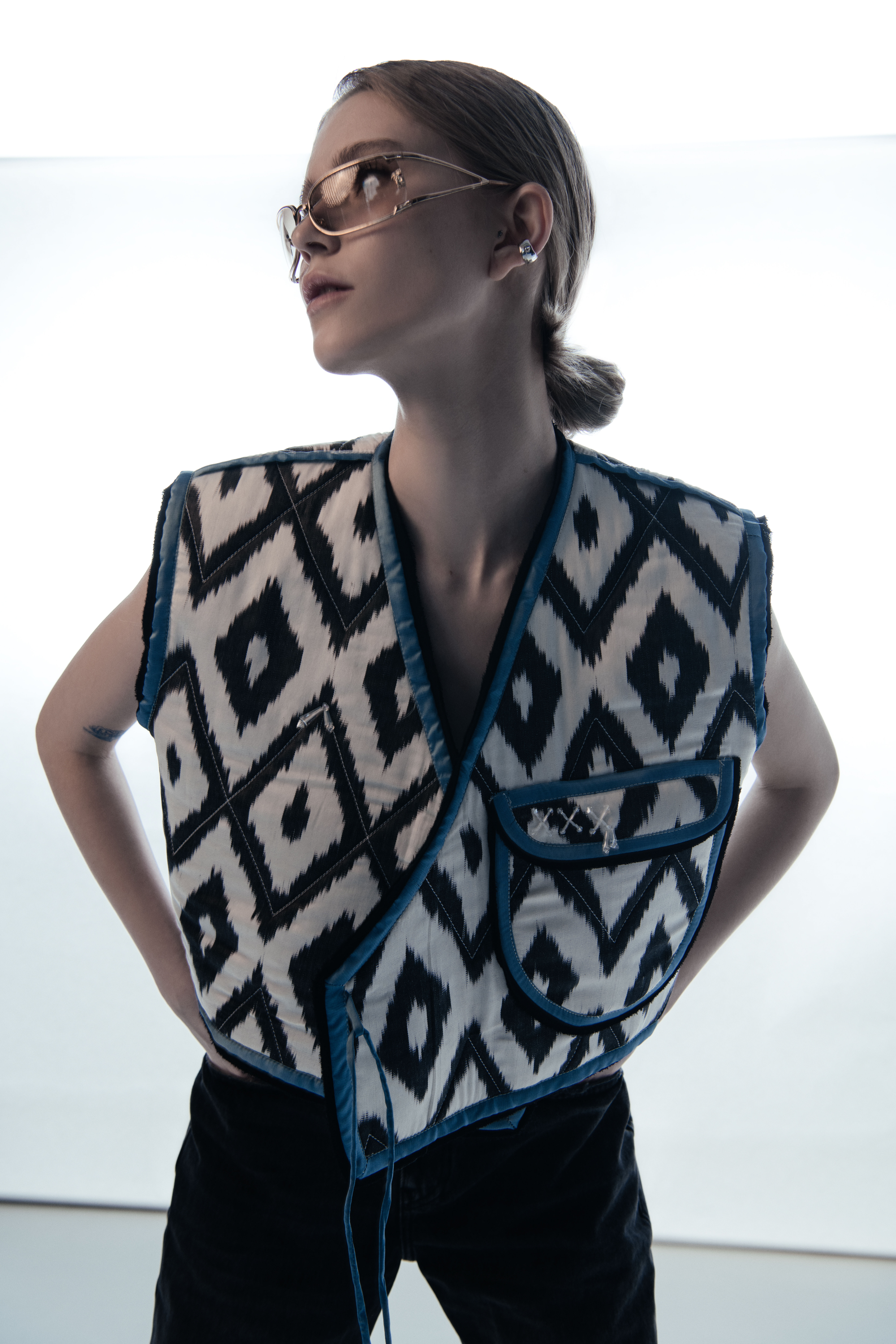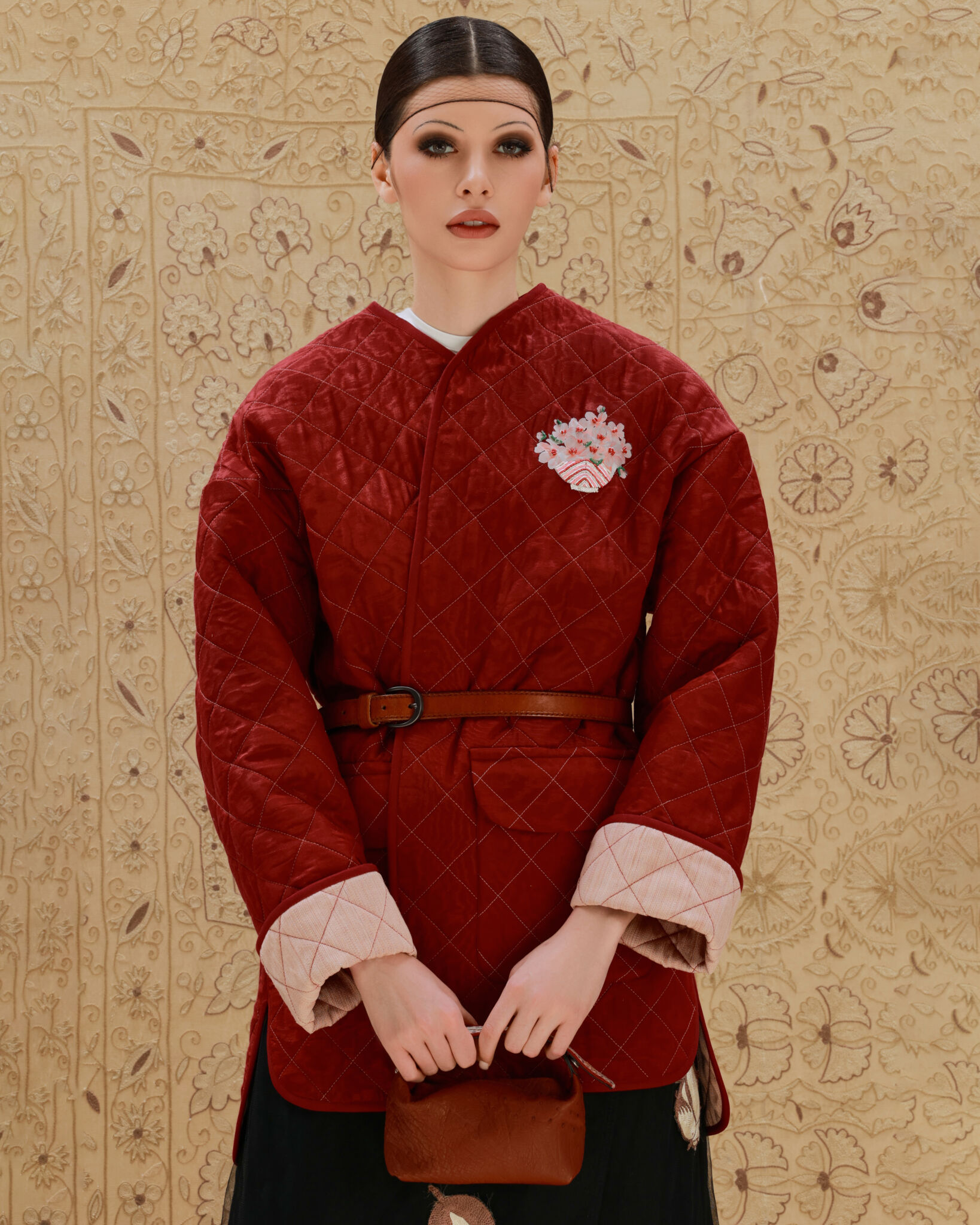A reimagining of chapans and their modern interpretations
Traditional clothes get a second wind.

The quilted robe is called a chapan and is the main component of the Uzbek national
costume. From Arabic, its name translates as «honorable garment».
In past centuries, a person's wealth and their region of residence could be discerned by their
chapan. For instance, muted colors signified the Tashkent region, while shades of blue and
burgundy denoted Bukhara and Samarkand, respectively. Striped fabrics were characteristic
of Khorezm. Chapans for the upper classes of society were embellished with golden
embroidery and silk appliqués. For warmer seasons, robes were crafted from lightweight
fabrics like cotton, while for colder climates, they were quilted and padded with cotton wool
for insulation.

PHOTO PROVIDED BY THE IRODA AGZAMHOJA HOUSE PRESS SERVICE
Nowadays, chapans serve as both a part of the costume for special occasions and a stylish
addition to everyday outfits. Embroidered chapans are gifted during significant events,
symbolizing respect and admiration, while designers have created numerous alternatives for
fashionable women.

PHOTO PROVIDED BY THE NIGORA HASHIMOVA HOUSE PRESS SERVICE
The sleeveless, cropped, adorned with ties, strokes of ikat, and delicate embroidery – Nigora
Hashimova's brand of chapans – they are paired effortlessly with jeans and t-shirts. For
traditional festive attire with suzani motifs, there's the craftsmanship of Madina Kasimbaeva, Dildora Kasimova, and Saadi Ethno, while cape interpretations by Iroda Agzamhoja, are perfect for upscale outings. Bright alternatives by Azukar Moreno, I’m Silk, and Oynur add a special accent to even the simplest of outfits.

PHOTO PROVIDED BY THE DILDORA KASIMOVA HOUSE PRESS SERVICE


